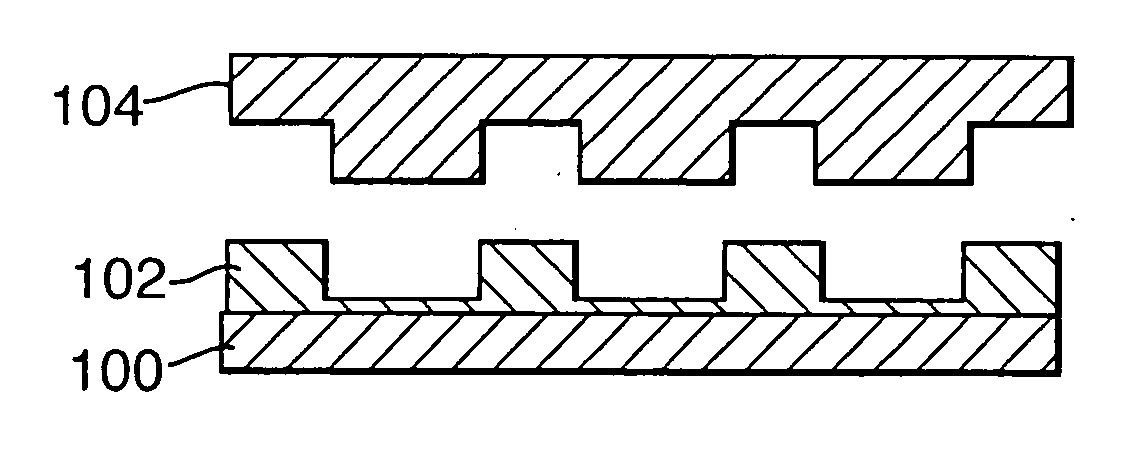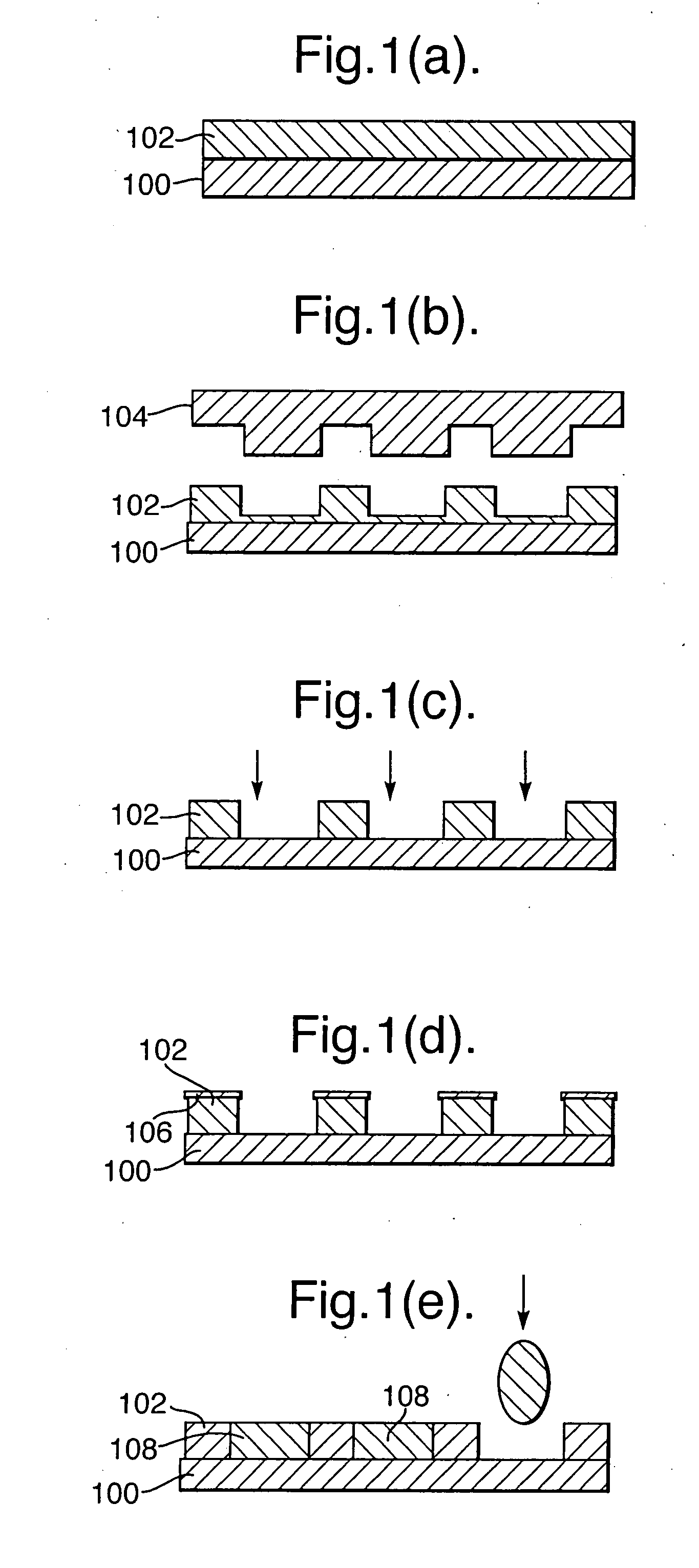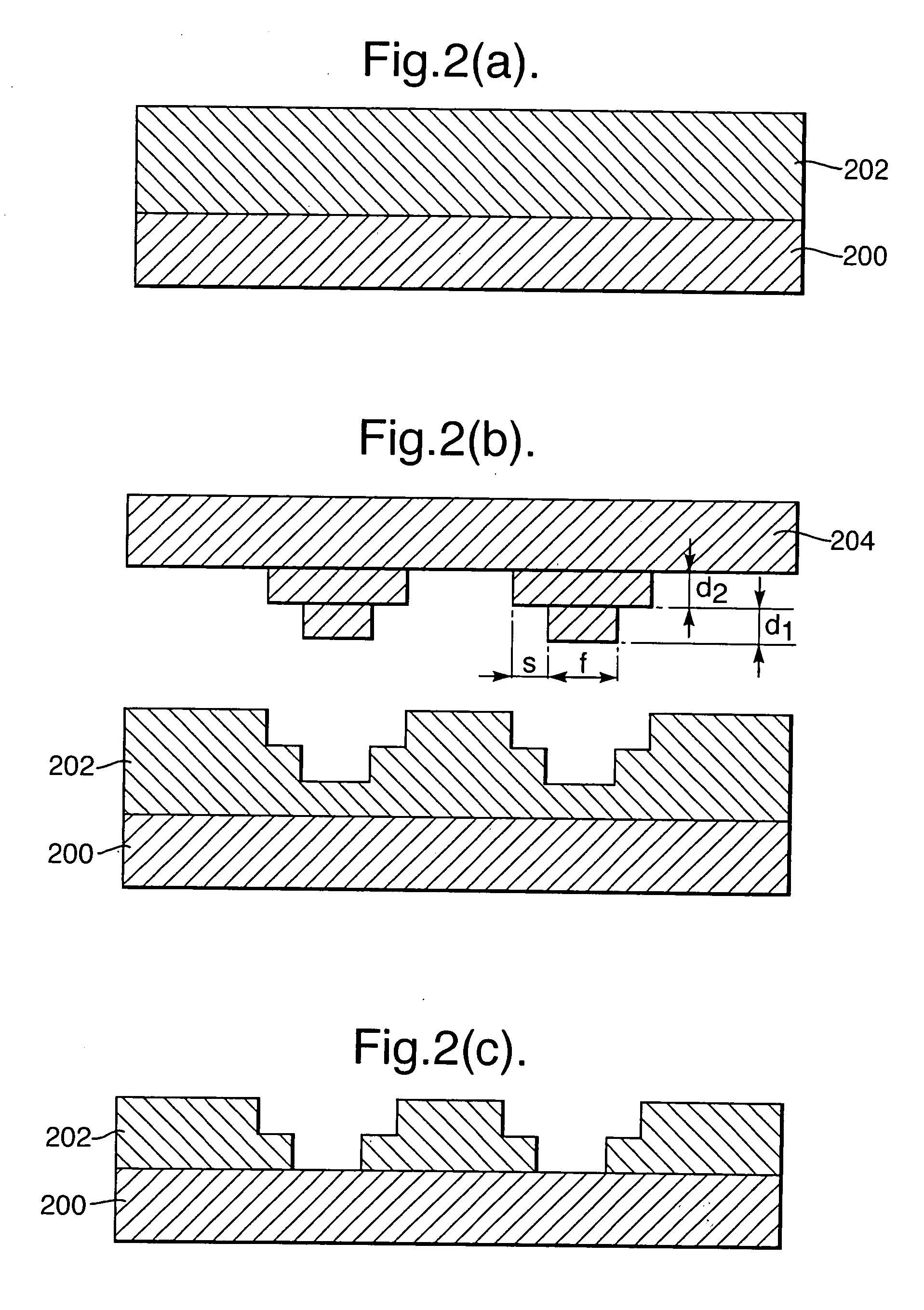Device fabrication by ink-jet printing materials into bank structures, and embossing tool
- Summary
- Abstract
- Description
- Claims
- Application Information
AI Technical Summary
Benefits of technology
Problems solved by technology
Method used
Image
Examples
Embodiment Construction
[0035] A multi-stepped tool 204 according to an embodiment of the present invention and its application are shown in FIG. 2. FIG. 2 illustrates a similar process to that shown in FIGS. 1a to 1c, comprising embossing and subsequently etching a polymer layer 202 formed on a substrate 200, but the process shown in FIG. 2 uses a two-stepped embossing tool 204. The use of a multi-stepped embossing tool provides significant advantages, as described below.
[0036]FIG. 3 shows a capacitor structure fabrication process according to an embodiment of the present invention. A 1 μm thick layer of poly(methyl methacrylate) (PMMA) 202 is spun onto a glass substrate 200 and pre-baked at 140° C. for 5 min. Then a multi-stepped silicon embossing tool 204 fabricated by optical lithography is pressed against the PMMA layer 202 at 170° C. After cooling the system to room temperature, the embossing tool 204 is released, leaving a stepped indentation in the PMMA layer 202 (FIG. 3a). The dimensions of the e...
PUM
| Property | Measurement | Unit |
|---|---|---|
| Thickness | aaaaa | aaaaa |
| Microstructure | aaaaa | aaaaa |
| Height | aaaaa | aaaaa |
Abstract
Description
Claims
Application Information
 Login to View More
Login to View More - R&D
- Intellectual Property
- Life Sciences
- Materials
- Tech Scout
- Unparalleled Data Quality
- Higher Quality Content
- 60% Fewer Hallucinations
Browse by: Latest US Patents, China's latest patents, Technical Efficacy Thesaurus, Application Domain, Technology Topic, Popular Technical Reports.
© 2025 PatSnap. All rights reserved.Legal|Privacy policy|Modern Slavery Act Transparency Statement|Sitemap|About US| Contact US: help@patsnap.com



